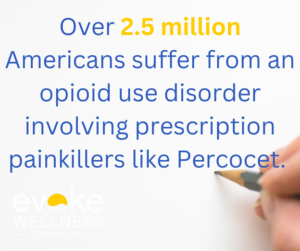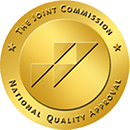Are you or a loved one struggling with Percocet addiction? You’re not alone. Opioid abuse has reached epidemic levels, with over 10 million Americans misusing prescription opioids in 2019. Percocet, a combination of oxycodone and acetaminophen, can lead to severe physical dependence. When you try to quit, withdrawal symptoms can be intense and even dangerous. But there’s hope. Understanding the withdrawal process and available treatments can help you break free from Percocet addiction. In this article, you’ll learn about:
- Percocet withdrawal statistics
- Common symptoms to expect
- Effective treatment options
Let’s explore how you can overcome Percocet dependence and reclaim your life.
Call us at (617) 917-3485 today or reach out online.
Introduction to Percocet Addiction
The Opioid Epidemic
Prescription opioid addiction has reached epidemic levels in the United States. Over 2.5 million Americans suffer from an opioid use disorder involving prescription painkillers like Percocet. This highly addictive medication contains oxycodone, an opioid that can lead to dependence and abuse with long-term use.
A Dangerous Combination
Percocet is a combination of oxycodone and acetaminophen. While the oxycodone component provides powerful pain relief, it also produces euphoric effects that reinforce continued use and increase addiction risk. The acetaminophen increases the medication’s analgesic potency but can cause liver damage at high doses.
Withdrawal Dangers
Attempting to quit Percocet after developing a physical dependence leads to extremely unpleasant and potentially dangerous withdrawal symptoms. These include body aches, nausea, vomiting, diarrhea, anxiety, insomnia and intense cravings. Withdrawal effects typically peak within 1-3 days but can persist for over a week, making medical detox essential for safety and managing symptoms.
Statistics on Opioid Addiction and Treatment
Staggering Numbers
The opioid epidemic has taken a staggering toll. In 2020 alone, over 68,000 Americans died from opioid overdoses – a nearly 37% increase from 2019. Prescription opioids like Percocet remain a major driving force, accounting for around 32% of those deaths.
Road to Recovery
However, there is hope. Medication-assisted treatment combining behavioral therapy and FDA-approved medicines can effectively treat opioid use disorder. These evidence-based approaches helped over 1.6 million Americans initiate recovery in 2020 – a 28% increase from 2019.
A Way Forward
With commitment to accessible, affordable treatment options, countless lives can be saved. By understanding these sobering statistics, you’re one step closer to overcoming Percocet addiction and regaining control over your life’s journey.
Signs and Symptoms of Percocet Withdrawal
When you stop taking Percocet after regular use, your body experiences unpleasant physical and psychological withdrawal effects. Early recognition of these signs is crucial for seeking timely medical assistance to safely manage the detox process.
Physical Symptoms
- Nausea, vomiting, and diarrhea as your digestive system readjusts
- Muscle aches, sweating, and chills due to opioid deprivation
- Insomnia and disrupted sleep patterns
- Constricted pupils and itchy, flushed skin
Psychological Effects
- Intense drug cravings and preoccupation with obtaining more Percocet
- Anxiety, irritability, restlessness, and mood swings
- Depression and lack of motivation
- Cognitive issues like confusion and memory problems
Withdrawal symptoms typically start within 12-24 hours after the last dose and peak around 2-3 days. Some effects may persist for weeks as your body fully readjusts without opioids, a condition known as post-acute withdrawal syndrome. Recognizing these signs allows proper treatment planning to manage discomfort and prevent relapse.
Percocet Withdrawal Timeline
Acute Phase (Days 1-3)
Within 5-8 hours after the last dose, early Percocet withdrawal symptoms appear. Severe aches, sweating, runny nose, chills, restlessness and drug cravings set in. Many relapse at this stage due to the intense discomfort.
Over days 2-3, the acute withdrawal peaks with intensifying flu-like symptoms, tremors, nausea, vomiting, diarrhea, anxiety and insomnia. This phase is excruciatingly difficult for most people.
Transition Phase (Days 4-7)
As the acute phase subsides, physical symptoms gradually decrease from days 4-7. However, intense psychological cravings for Percocet emerge, making this a vulnerable period for relapse.
Post-Acute Phase (Weeks 2+)
After the initial week, most physical symptoms have resolved. But psychological effects like depression, anxiety and drug hunger can worsen and persist for months – especially in long-term users.
These post-acute withdrawal symptoms (PAWS) can continue for up to 18-24 months before fully resolving, albeit gradually subsiding over time.
Percocet Detox and Medical Supervision
Professional Guidance is Key
Attempting to detox from Percocet alone can be extremely risky and even life-threatening. The withdrawal symptoms can be severe, including nausea, muscle cramps, anxiety, and insomnia. It’s crucial to have medical supervision during this process to ensure your safety and increase your chances of success.
Inpatient or Outpatient Care
Both inpatient and outpatient detox programs provide medical monitoring and support. Inpatient programs offer 24/7 care in a residential facility, while outpatient programs allow you to live at home while attending regular appointments. The right choice depends on your specific situation and the severity of your addiction.
Medication-Assisted Treatment
To alleviate withdrawal symptoms and cravings, medications like buprenorphine and methadone are often prescribed during detox. These medications can help stabilize your condition and make the process more manageable, increasing your likelihood of completing the detox successfully.
Ongoing Therapy and Support
Detox is just the first step in overcoming Percocet addiction. After completing the detox phase, it’s essential to participate in ongoing therapy, counseling, and support groups to address the underlying causes of your addiction and develop coping strategies for long-term recovery.
Percocet Addiction Treatment Options
Medically Supervised Detox
The first step in treating Percocet addiction is going through a medically supervised detox program. This helps reduce or eliminate withdrawal symptoms through prescribed medications and 24/7 monitoring by medical professionals. Attempting to quit “cold turkey” can be extremely difficult and even dangerous without proper care.
Residential Treatment
After detox, a comprehensive residential treatment program addresses the underlying psychological and behavioral issues driving the addiction. One-on-one and group therapy, counseling, relapse prevention support and holistic care help clients adapt to a drug-free lifestyle.
Medication-Assisted Therapy
Certain medications like buprenorphine (Suboxone), methadone and naltrexone are FDA-approved for treating opioid addiction. These help minimize cravings and withdrawal symptoms, making it easier to focus on counseling and behavioral therapies. Medication-assisted treatment is often combined with residential programs.
Outpatient Programs
For those who have completed detox and residential treatment, outpatient programs provide ongoing support and relapse prevention strategies. These allow clients to live at home while continuing counseling and therapy sessions on a scheduled basis to reinforce their recovery journey.
Percocet withdrawal FAQs
Is Percocet Addictive?
Percocet contains oxycodone, a potent opioid that can lead to physical dependence even when taken as prescribed. Opioid use disorder becomes a physical issue after just 2-3 months of regular Percocet use. This makes the drug highly addictive and difficult to quit without professional help.
What Are Percocet Withdrawal Symptoms?
Common withdrawal symptoms include muscle/bone pain, runny nose, anxiety, fever, stomach cramps, nausea, vomiting, diarrhea, tremors, insomnia and intense drug cravings. Symptoms begin within 5-8 hours after the last dose as Percocet’s effects wear off rapidly.
Psychological issues like depression can also emerge, potentially leading to suicidal thoughts without proper treatment. Withdrawal causes the brain’s reward pathway to become disrupted.
How Long Does Percocet Withdrawal Last?
Withdrawal symptom severity peaks around days 2-3 and most physical issues resolve after the first week. However, strong cravings persist for months through post-acute withdrawal syndrome (PAWS). Withdrawal duration depends on factors like dosage, frequency of use and individual physiology.
Is Imodium Safe for Opioid Withdrawal?
No, Imodium (loperamide) is an over-the-counter anti-diarrheal only meant to treat that one symptom. Taking Imodium beyond recommended doses risks overdose, organ damage and other severe side effects. It cannot relieve overall opioid withdrawal safely.
What Medications Help With Withdrawal?
Medications like buprenorphine, methadone, clonidine and trazodone are commonly used to manage opioid withdrawal symptoms. Buprenorphine and methadone can rapidly reverse withdrawal effects while others treat specific issues like anxiety, nausea, diarrhea and insomnia.
Medical detox ensures safe, effective medication use under 24/7 clinical supervision at facilities like Evoke Wellness. This makes withdrawal more comfortable and increases chances of staying in treatment.
Conclusion
Overcoming Percocet withdrawal is a challenging but achievable goal. By understanding the symptoms and seeking proper treatment, you can successfully break free from opioid dependence. Remember:
- Withdrawal symptoms typically peak within 72 hours
- Professional medical supervision is crucial for safety
- Both medication-assisted and behavioral therapies are effective
Recent statistics show that over 2 million Americans struggle with opioid addiction, but treatment success rates are improving. In 2022, medication-assisted treatment programs reported a 60% long-term recovery rate. With determination and the right support, you can join the growing number of individuals who have reclaimed their lives from Percocet addiction. Don’t hesitate to reach out for help – recovery is possible, and a healthier future awaits.
Begin Your Journey with Evoke Wellness at Cohasset
If you or a loved one is considering treatment, Evoke Wellness at Cohasset invites you to contact us. Our compassionate team is ready to answer your questions, discuss your needs, and help you take the first steps toward recovery. In Cohasset, you’ll find more than just a treatment program – you’ll discover a community dedicated to your wellness and success. Together, let’s embrace the journey to recovery and the promise of a new beginning. Call us at (617) 917-3485 today or reach out online.





